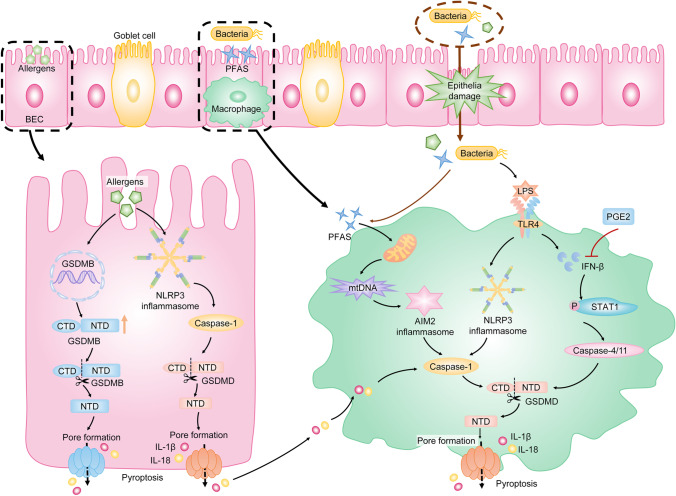Fig. 3.
Pyroptosis in asthma. Environmental allergens activate the NLRP3/caspase-1/GSDMD signaling pathway to trigger pyroptosis of BECs. Meanwhile, allergens induce the increased transcription of GSDMB, which results in GSDMB-dependent pyroptosis. Pyroptosis of BECs leads to the loss of epithelial integrity and increased secretion of pro-inflammatory cytokines such as IL-1β and IL-18, which promote augmented and persistent pulmonary inflammation downstream. Additionally, macrophages are the main effectors against environmental particles. PFAS triggers AIM2 inflammasome-induced pyroptosis of macrophages by causing mitochondrial damage, which results in the accumulation of mtDNA. Additionally, bacteria induce pyroptosis of macrophages by activating the TLR4/NLRP3/caspase-1/GSDMD pathway. Meanwhile, LPS causes the upregulation of IFN-β, which results in the activation of STAT1. The activation of STAT1 leads to the increased caspase-4/11, which is important in the pyroptotic signaling pathway. PGE2 indirectly inhibits the caspase-4/11-induced pyroptosis in macrophages by suppressing IFN-β to take a protective role in asthma. Note: BECs, bronchial epithelial cells; PFAS, perfluoroalkyl substance; mtDNA, mitochondrial DNA; AIM2, absent in melanoma 2; IFN-β, interferon-beta; STAT1, signal transducer and activator of transcription 1; PGE2, prostaglandin E2

